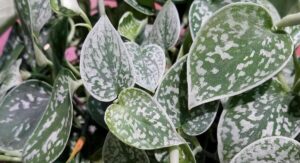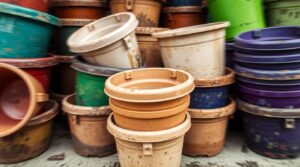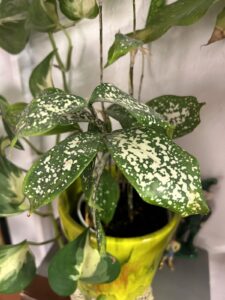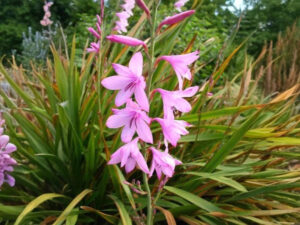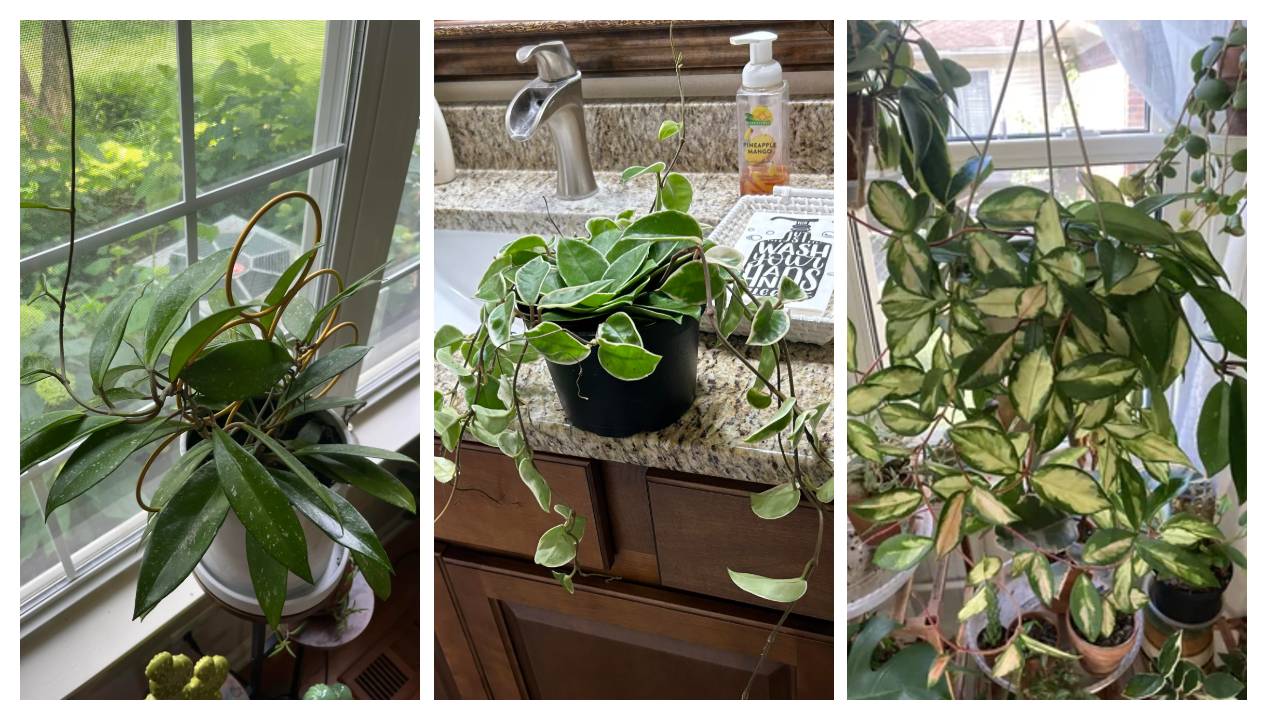
“I just got this a month ago! How is it already dead? Actually, maybe it was 3 months ago. Oh no—did I ever water it?” you think as you touch the wilted, brown leaves of your hoya plant. A sense of failure washes over you, as this isn’t the first time you’ve found yourself in this situation. In fact, this is the fifth plant you’ve managed to kill, and it’s really starting to get to you.
Your green-thumb friend had assured you that the hoya was an “unkillable” houseplant that required minimal maintenance. So how did you end up with yet another deceased plant on your hands? “That’s it. I’ve killed them all—even the unkillable ones. I’m never buying a plant again,” you think as you sadly Google (for the fifth time) what to do with an on-its-way-out plant.
Fear not – all hope is not lost for your hoya. With the right care and a little patience, you can revive even the most seemingly hopeless of plants. In this beginner’s guide, we’ll walk you through simple tricks to resurrect your hoya and get it thriving again, no matter your gardening experience (or lack thereof).
In this article
Diagnosing the Problem
The first step in reviving your hoya is to figure out what went wrong in the first place. Take a close look at the plant, examining the leaves, stems, and soil for any clues. Is the soil bone-dry? Are the leaves wilted and discolored? Or maybe they’re turning yellow and falling off? Each issue points to a different problem that requires a specific solution.
Once you’ve identified the root cause, you can start taking the necessary steps to nurse your hoya back to health. Don’t worry if you’re not sure what’s wrong – we’ll cover the most common hoya issues and how to address them.
Reviving a Dehydrated Hoya
One of the most common problems with hoya plants is underwatering. These tropical beauties thrive in consistently moist (but not soggy) soil, and allowing the potting mix to completely dry out can quickly lead to a wilted, unhappy plant.
If your hoya’s leaves are drooping and the soil is bone-dry, it’s time to give it a good drink. Gently remove the plant from its pot and check the roots – if they’re shriveled and brown, it’s a sign of severe dehydration.
“Soak the root ball in a bowl of lukewarm water for 30 minutes to an hour, allowing the roots to rehydrate,” advises our expert. Once the soil is thoroughly saturated, repot the hoya in fresh, well-draining potting mix. Water it thoroughly, making sure the soil is evenly moist but not waterlogged.
Going forward, aim to keep the soil consistently moist, but not soaked. “Stick your finger into the soil up to the second knuckle – if it feels dry, it’s time to water,” says our gardening pro. Hoya plants are sensitive to both over- and underwatering, so finding the right balance is key.
RELATED: 7 Apartment-Friendly Houseplants
Reviving an Overwatered Hoya
While underwatering is a common issue, it’s also possible to love your hoya a little too much. Overwatering can lead to a whole host of problems, from yellowing leaves and stem rot to fungal diseases.
If your hoya’s leaves are turning yellow or brown and the soil is constantly soggy, it’s likely suffering from too much water. “The first step is to stop watering the plant immediately and allow the soil to partially dry out,” advises our expert.
Carefully remove the hoya from its pot and inspect the roots. Healthy roots should be firm and white or light green. If they’re mushy, brown, or black, that’s a sign of root rot. “Trim off any damaged or decaying roots with a clean, sharp pair of scissors,” our gardening pro suggests.
Repot the hoya in fresh, well-draining potting mix, making sure the soil is not compacted. Water the plant sparingly, only when the top inch or two of soil has dried out. Avoid letting the soil become completely dry, as this can also stress the plant.
As the hoya recovers, you may notice some leaf drop. “Don’t worry – this is a normal response to the stressful conditions, and the plant will eventually bounce back with proper care,” our expert assures.
Reviving a Hoya with Pests or Diseases
Sometimes, the reason your hoya is struggling has nothing to do with watering. Pests or diseases can also wreak havoc on these otherwise hardy plants.
If you notice tiny bugs crawling on the leaves or stems, or if the foliage is discolored or spotted, it’s likely a pest or disease issue. “Common hoya pests include mealybugs, spider mites, and scale insects, while fungal diseases like powdery mildew and root rot can also cause problems,” our gardening pro explains.
Start by isolating the affected plant to prevent the problem from spreading to your other houseplants. Then, treat the hoya with an appropriate insecticide or fungicide, following the product’s instructions carefully. “You may need to repeat the treatment a few times to fully eradicate the issue,” our expert advises.
In the case of pests, you can also try manual removal techniques, such as wiping down the leaves with a damp cloth or using a cotton swab dipped in rubbing alcohol to remove scale insects. For fungal diseases, improving air circulation and reducing humidity can help prevent recurrence.
Did you know? There are over 500 published species, and thousands of hybrids, cultivars, and unpublished species in circulation among collectors, so there’s never a shortage of hoyas to collect. Beyond that, most of them are pretty easy to care for and do well in a typical home environment. They also are slower growers by and large, which means you can manage a large collection more easily. Also, many collectors get pleasure out of seeing if/how fast they can go from a cutting to a full, blooming vine. Many also have attractive foliage in addition to beautiful flowers, which is a little unusual in the houseplant world. Additionally, the market is a lot less volatile for hoyas as opposed to aroids, meaning you can build a financially self-sustaining collection a lot easier than with aroids, which are more subject to the whims of the tissue culture labs.
Frequently Asked Questions
How do I know if my hoya is getting enough light?
Hoya plants thrive in bright, indirect light. “If your hoya’s leaves are starting to stretch or become pale, it’s a sign that it’s not getting enough light,” our expert explains. Move the plant to a spot that receives several hours of bright, filtered sunlight each day.
How often should I water my hoya?
The frequency of watering will depend on factors like the size of the plant, the temperature and humidity in your home, and the type of potting mix used. “As a general rule, allow the top inch or two of soil to dry out before watering again,” our gardening pro advises. “Stick your finger in the soil to check the moisture level.
Can I propagate my hoya plant?
Yes, hoyas are relatively easy to propagate. “You can take stem cuttings and root them in water or well-draining potting mix,” our expert explains. “Look for a healthy, mature stem with several leaf nodes, and cut it just below a leaf. Allow the cutting to callus over for a day or two before placing it in water or soil to root.”
Don’t give up on your hoya plant just yet! With a little TLC and the right care, you can revive even the most seemingly hopeless of houseplants. As our gardening pro reminds us, “Every plant is different, and what works for one hoya may not work for another.
Be patient, observe your plant closely, and adjust your care routine as needed. With a little practice and persistence, you’ll be on your way to becoming a hoya-care pro in no time.”
So, give your “unkillable” hoya another chance – it just might surprise you with its resilience and ability to bounce back, even from the brink of death.
YOU MIGHT ALSO LIKE: Why Everyone’s Obsessed with These Stunning Houseplants
